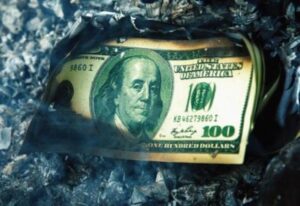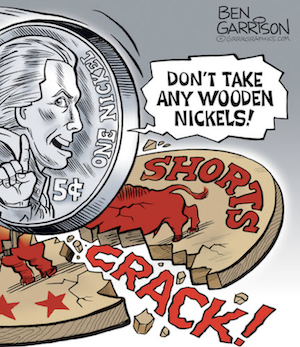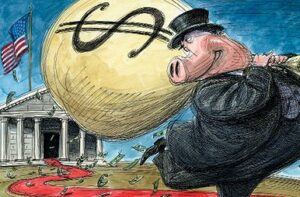 The value of a dollar shouldn’t require much math. If you have $1, you have $1, right?
The value of a dollar shouldn’t require much math. If you have $1, you have $1, right?
Sort of! The dollar’s value fluctuates over time (inflation) and due to economic conditions (such as tariffs) based on how much you can purchase with that same dollar. Thus a dollar is really a measure of purchasing power.
For instance, there was a time when a single dollar could buy multiple groceries, whereas today you can’t even buy a dozen eggs for anywhere near that price due to inflation.
If the dollar lost half of its value, what would the impact look like on the economy and your wallet?
Some Fluctuation Is Normal
In truth, the dollar value fluctuating is a pretty regular occurrence, according to Jim Pendergast, general manager of altLINE by The Southern Bank . “[We] saw the dollar value drop at a fairly similar clip from 2022 into 2023, as it is now, before slowly recovering,” he said.
A 50% drop in dollar value is hard to envision in the short term, he said, and unlikely, though not impossible.
“We recently saw Argentina’s currency value drop drastically in just a couple of years, a decline that exceeded 50%, so it’s not entirely impossible. But within our borders, we haven’t seen things fail to revert to a relative norm in decades.”
Immediate Impacts
The immediate impact of a value drop would be inflation-related challenges, such as prices going up and the cost of goods increasing, Pendergast said.
“Another impact that may not be as obvious is the impact it has on savings accounts. Money in your savings account could be losing value, particularly if interest rates aren’t keeping up.”
Worst-Case Scenarios
Aaron Razon, a personal finance expert at Coupon Snake, takes a slightly more alarmist approach. He said that if the U.S. dollar were to really lose half of its value, the result could be “devastating for consumers.”
While such a devaluation would be a worst-case scenario, he said that scenario could “attack everyday expenses and drive up their prices in a way that would make affordability even more of a financial struggle than it is today.”
This could have an impact on utility costs like electricity, gas and water, because the cost of importing their equipment would have become more expensive. Importing oil and food would also become more expensive, leading to higher prices for gas, food and other essentials.
“[The] result of all these price increments would be a strained household budget that would force families to make tough financial decisions,” Razon said.
Warning Signs
Thankfully, Pendergast said that “we do know what the warning signs are of an impending drop, such as sharp increases in national debt and inflation, along with unforeseen Fed reserve policy changes.”
While the average American’s purchasing power may feel strained due to high costs of living and tariff increases, he said the U.S. is not quite there yet.
Invest In Safe Havens
Shaky economic times call for having “stable cash reserves,” Pendergast said, though he noted, “It’s easier said than done when prices are going up. He recommended people keep some funds liquid and earning interest in a high-yield savings account.
Additionally, if you have the funds to spare, you could consider investing in “safe haven” assets such as gold or other precious metals, Razon said. “These assets provide a hedge against currency devaluation and inflation, and even tend to maintain their value over time.”
However, Razon said he doesn’t think a 50% devaluation scenario is realistic.
Stagflation Is More Likely
What’s more likely to happen than a serious drop in the dollar is “stagflation,” according to an April 2025 Wolters Kluwer Blue Chip Economic Indicators Survey.
In it, 46 leading economists agree that the U.S. has shifted from solid growth to a risk of stagflation over the next 12 months as a result of U.S. trade policy, notably tariffs.
“Financial markets are very disturbed by the Trump Administration’s widespread imposition of tariffs on goods produced by almost every economy with which the US trades,” the report states. “Some estimates have the US effective tariff rate rising to its highest level in more than 100 years. Financial markets worldwide, especially equity markets, have reacted negatively to the tariff increases announced on April 2.”
Almost half of the economists in the survey (49%) fear these impacts will be “lasting,” while 51% think they will not.
Find a Trusted Financial Advisor
No matter what shape the economy is in, thus your own personal finances, Pendergast urged consumers to “establish a good relationship with a bank or trusted financial advisors” who can advise on best practices.
Kettle Moraine, Ltd.
P.O. Box 579
Litchfield Park, AZ 85340
1 – 602 – 799 – 8214
KettleMoraineLtd@cox.net
Written by Jordan Rosenfeld and published at Go Banking Rates ~ April 26, 2025








